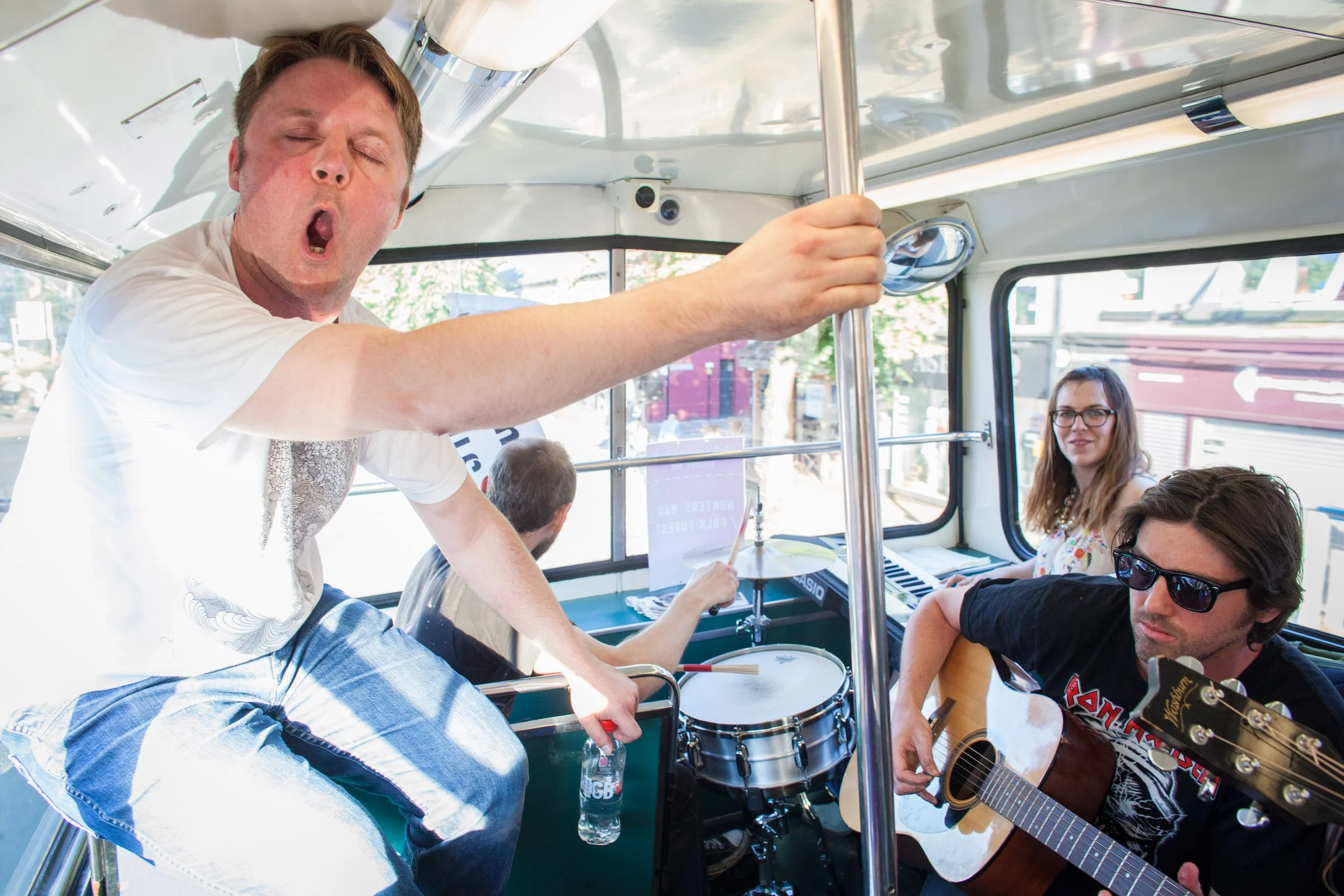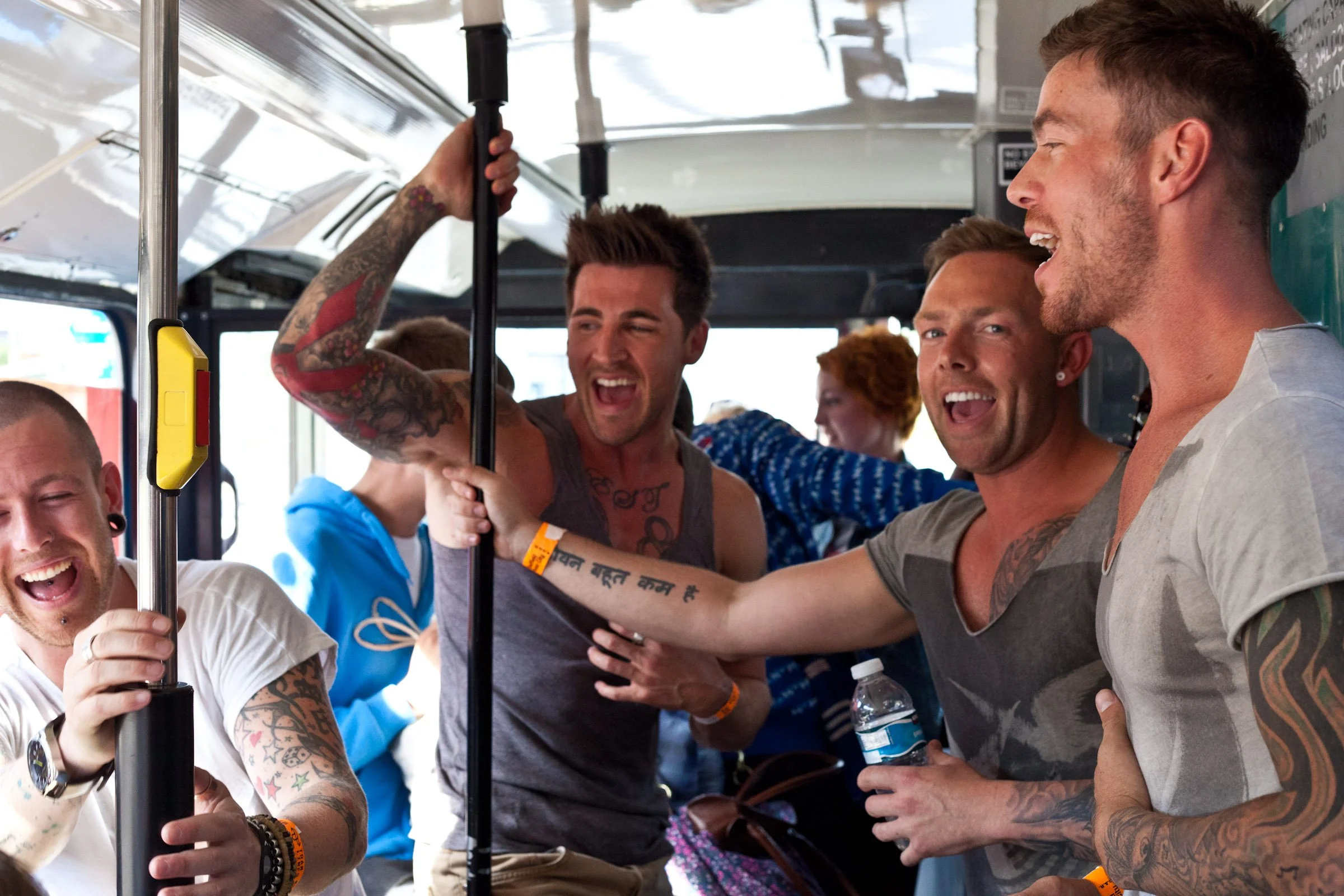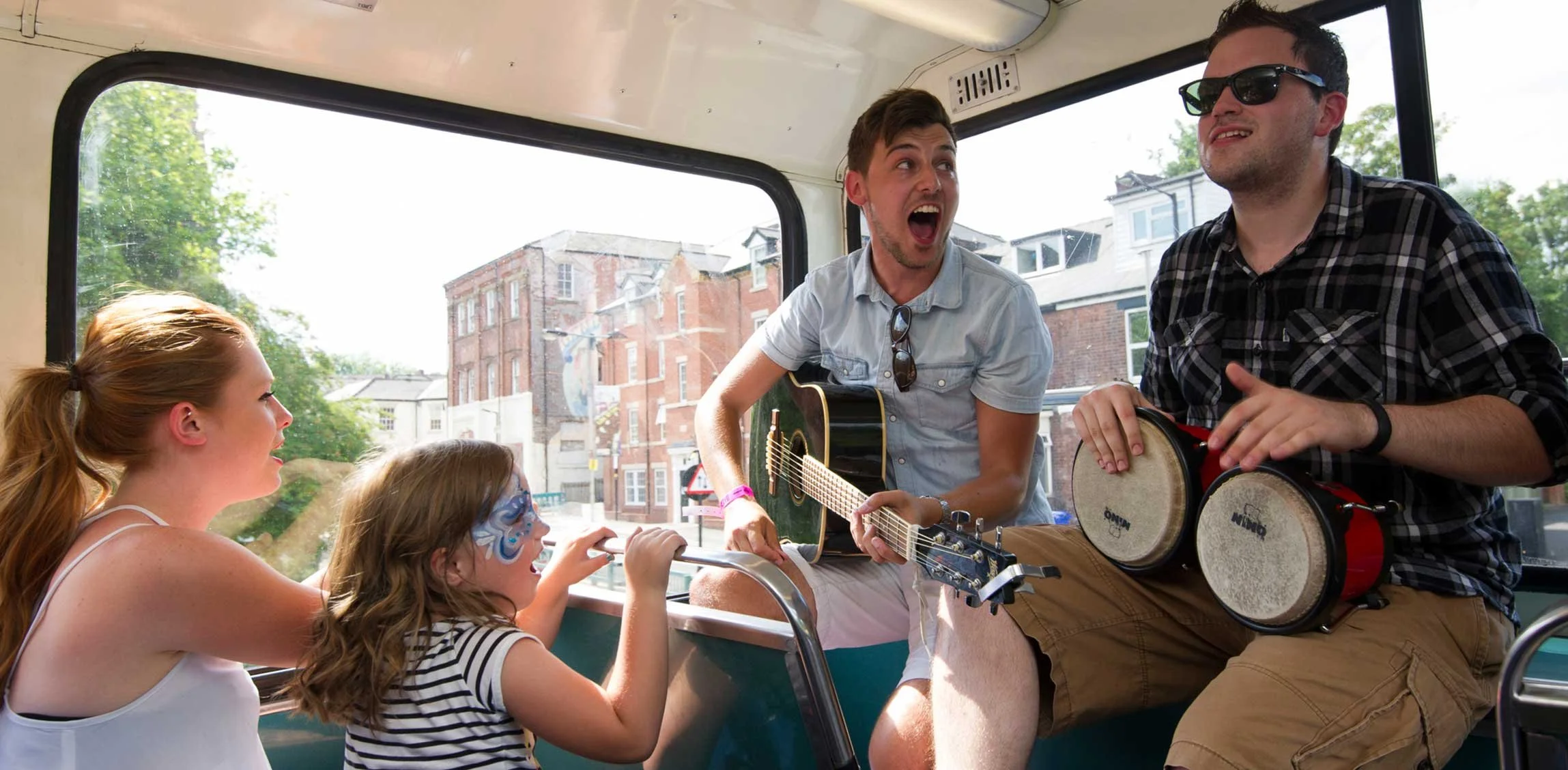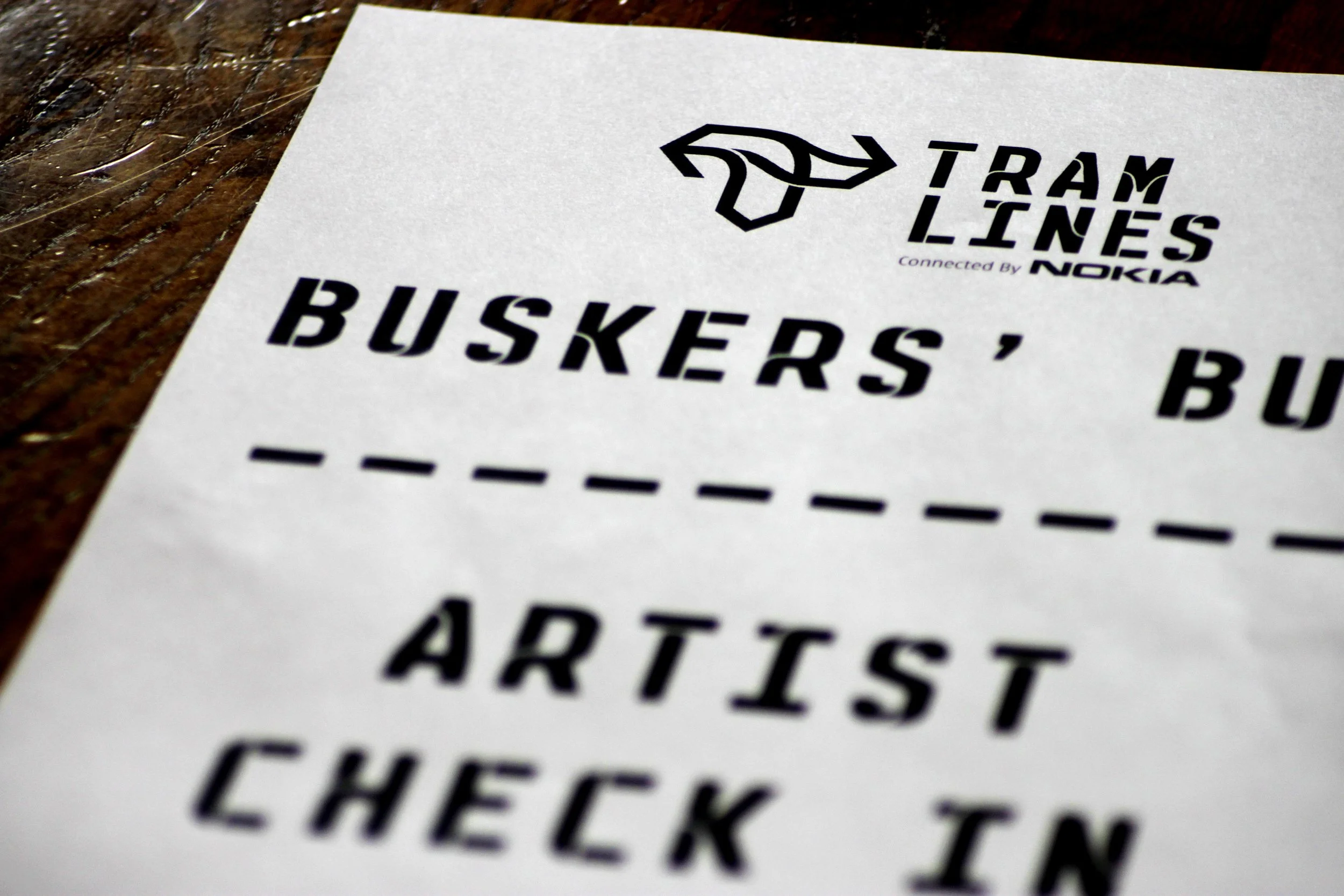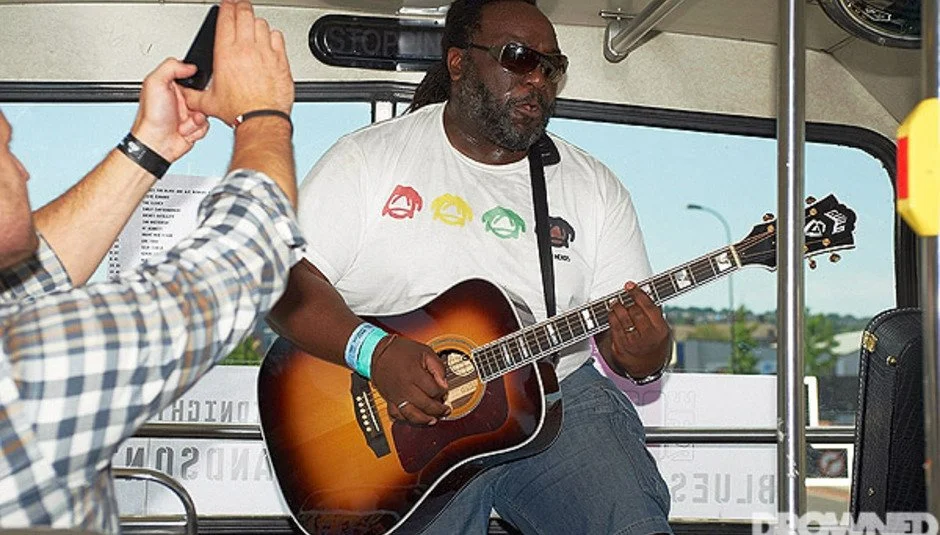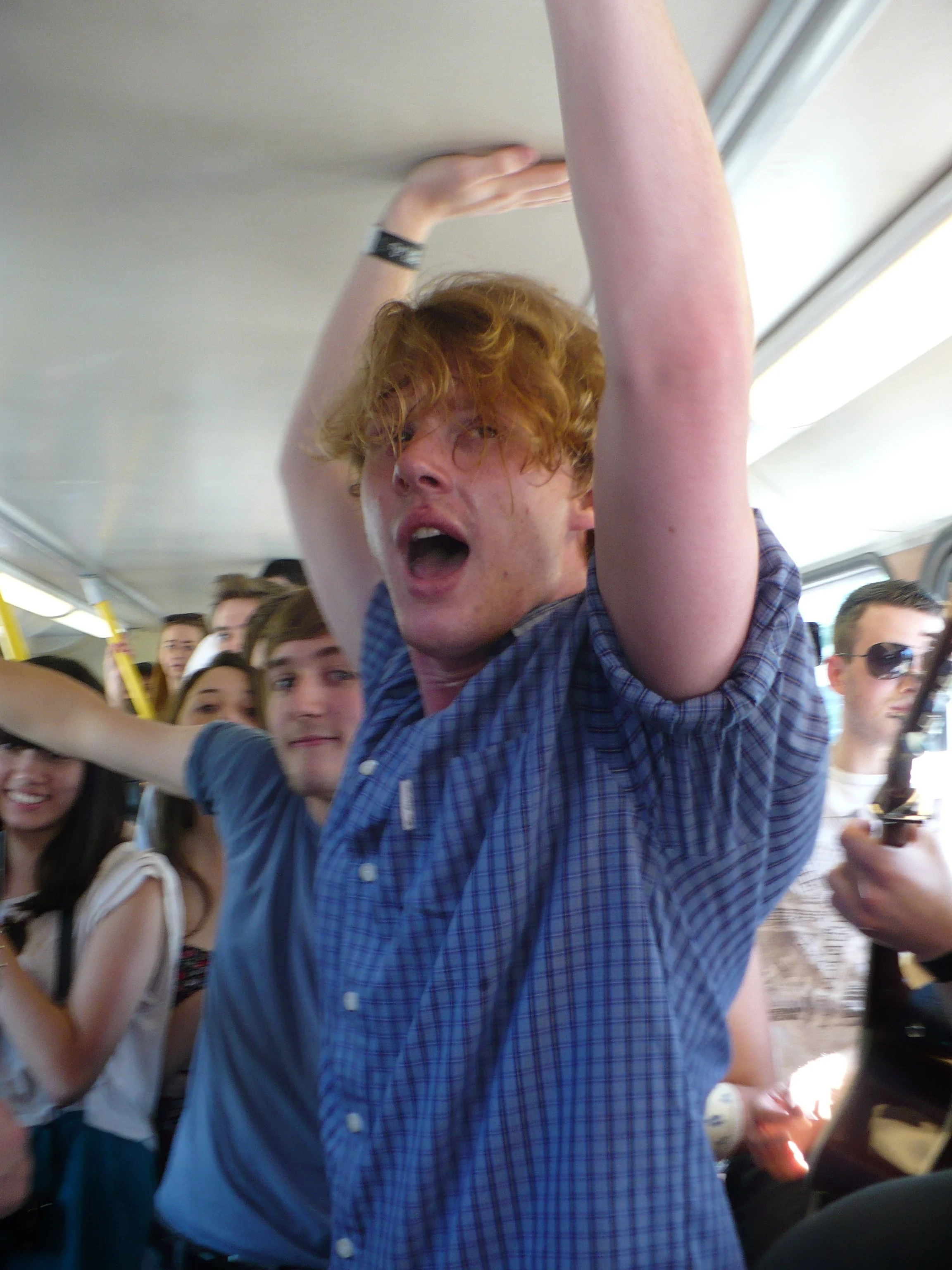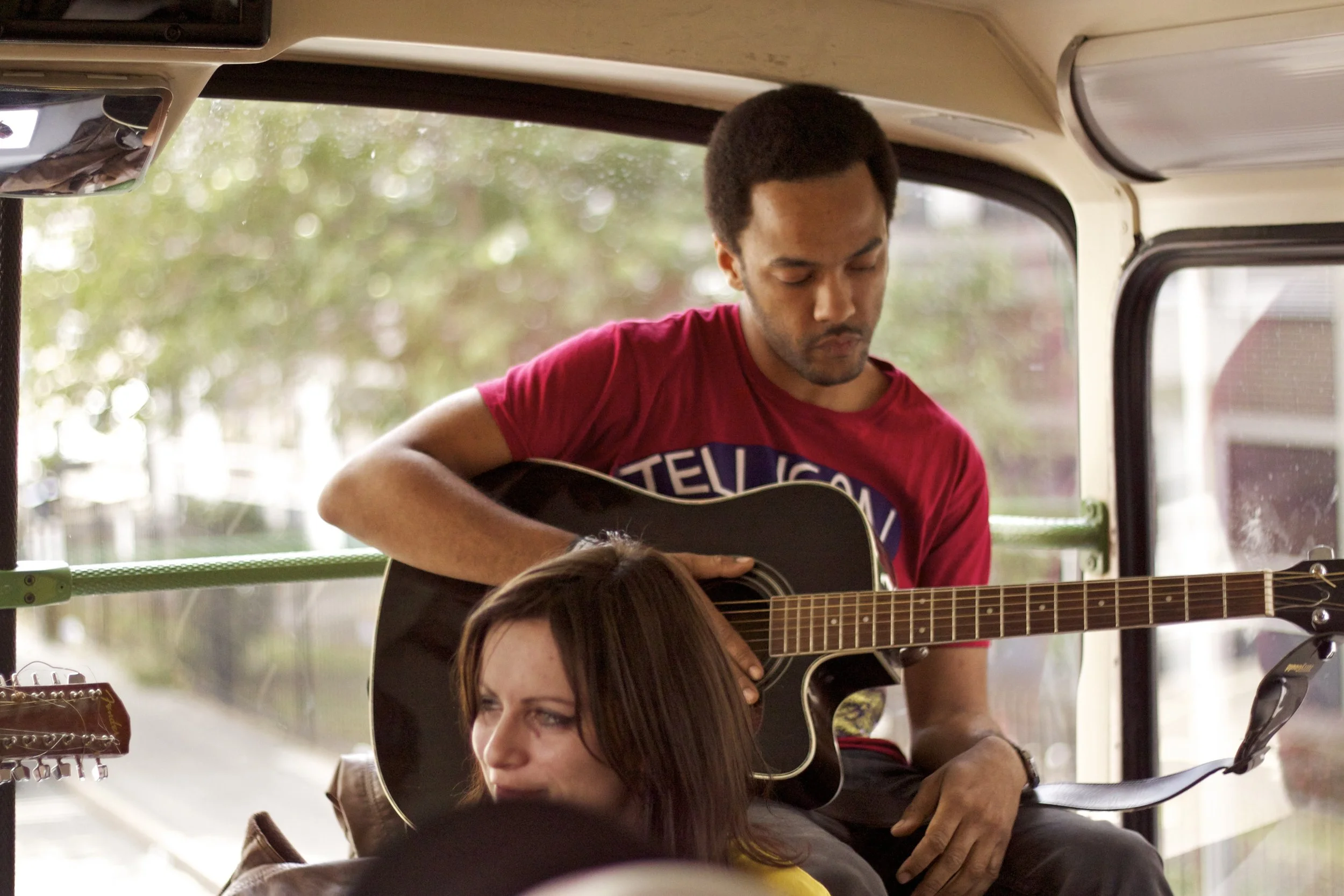
Tramlines
Turning the city streets into a festival’s biggest stage.
In only its second year, Tramlines was still finding its feet. Spread across Sheffield’s city centre in more than 70 venues and outdoor stages, the challenge was both logistical and cultural: how to connect the programme, give more local artists a platform, and broaden its appeal beyond the core indie crowd.
The answer came in the form of the Busker’s Bus. A 20-minute circular that ran all weekend, free for anyone with a festival wristband. On board, a rolling line-up of emerging artists played live sets while the bus linked the festival’s stages. What began as a way to ease demand on oversubscribed venues quickly became a festival within a festival.
Over the next five years, as Tramlines matured into an award-winning festival dubbed the UK’s “urban Glastonbury,” the Busker’s Bus became a cornerstone of the event.
The concept grew into a network of routes and a fleet of buses, each doubling as a moving billboard for sponsors and a stage for surprise performances. Headliners began dropping in for unannounced sets, while fans live-streamed from packed aisles, turning the experience into a social media honeypot and PR engine.
The Busker’s Bus generated consistent media attention, fresh sponsorship revenue and the kind of stories that fuelled word of mouth. Each year it carried tens of thousands of passengers and staged hundreds of live performances, cementing Tramlines’ place as a city-wide celebration with music at every turn.




